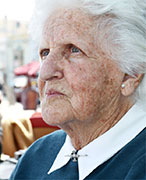One-third of practices use a defined quality improvement process
THURSDAY, May 28, 2015 (HealthDay News) — Home-based primary care practices vary in terms of size and approaches to quality of care assessment, according to a study published in the May issue of the Journal of the American Geriatrics Society.
Bruce Leff, M.D., from Johns Hopkins University in Baltimore, and colleagues conducted a survey of home-based primary care practices to evaluate practice characteristics, care provided by the practice, and how the quality of care that the practice provided was assessed.
Based on the 272 responding medical house calls practices, the researchers found that the mean average daily census was 457 patients (median, 100), with 88 percent of practices offering around-the-clock coverage for urgent concerns. The majority (89 percent) used an electronic medical record, 60 percent held regularly scheduled team meetings, and one-third used a defined quality improvement process. Factors associated with practices that used a defined quality improvement process include: practice holds regularly scheduled team meetings to discuss specific patients (odds ratio [OR], 2.07), practice conducts surveys of patients (OR, 8.53), and practice is involved in National Committee for Quality Assurance patient-centered medical home (OR, 3.27).
“Most practices perform activities that lend themselves to robust quality improvement efforts, and nearly all indicated interest in a national registry to inform quality improvement,” the authors write.
Copyright © 2015 HealthDay. All rights reserved.








